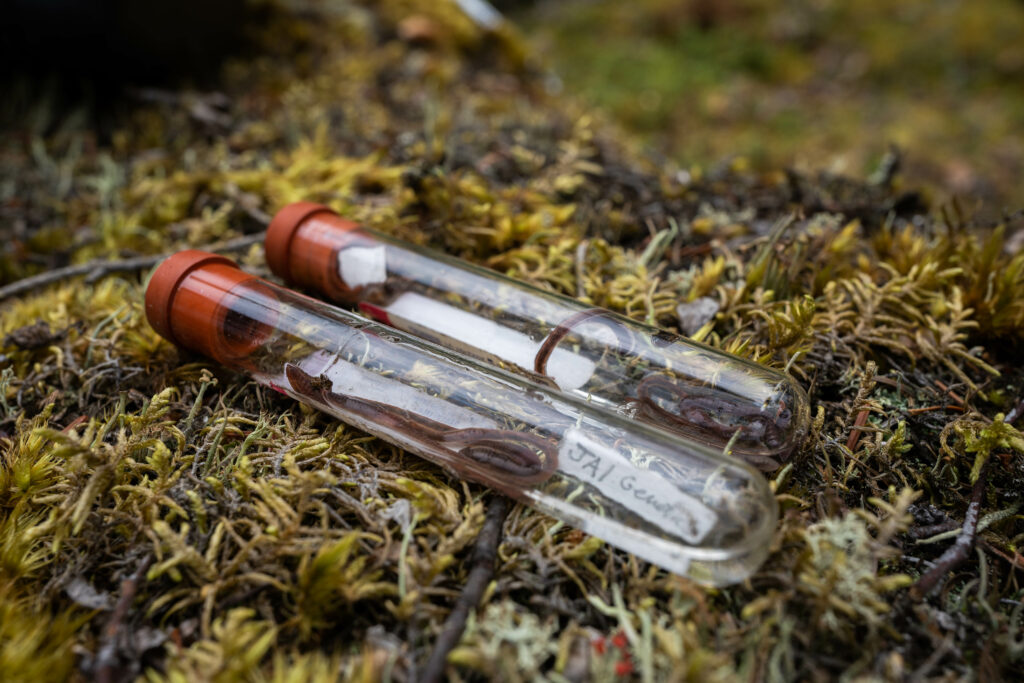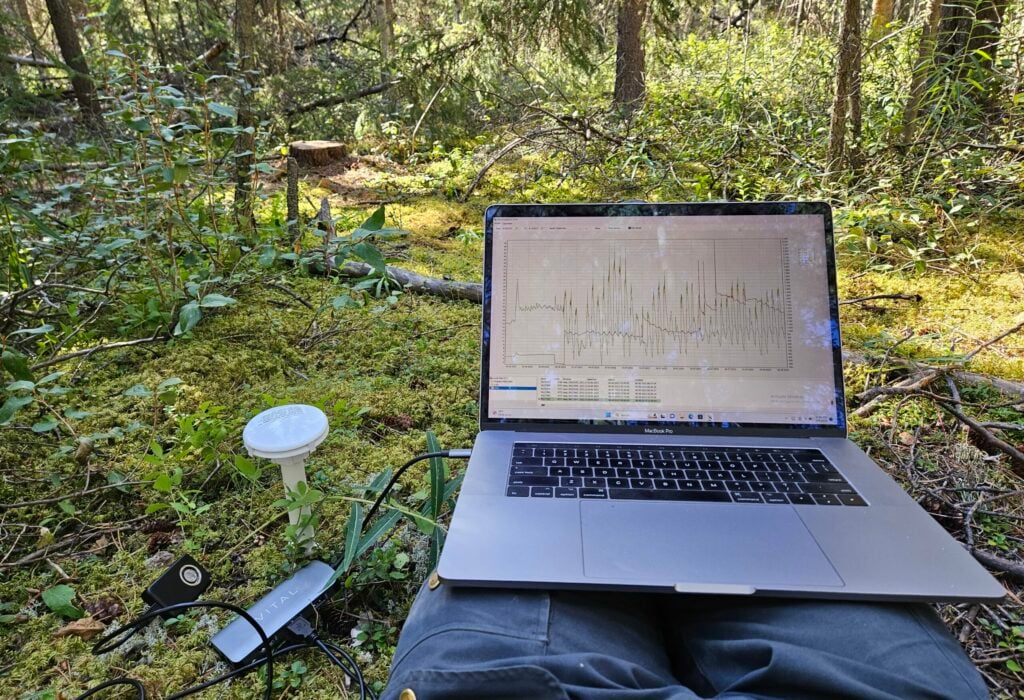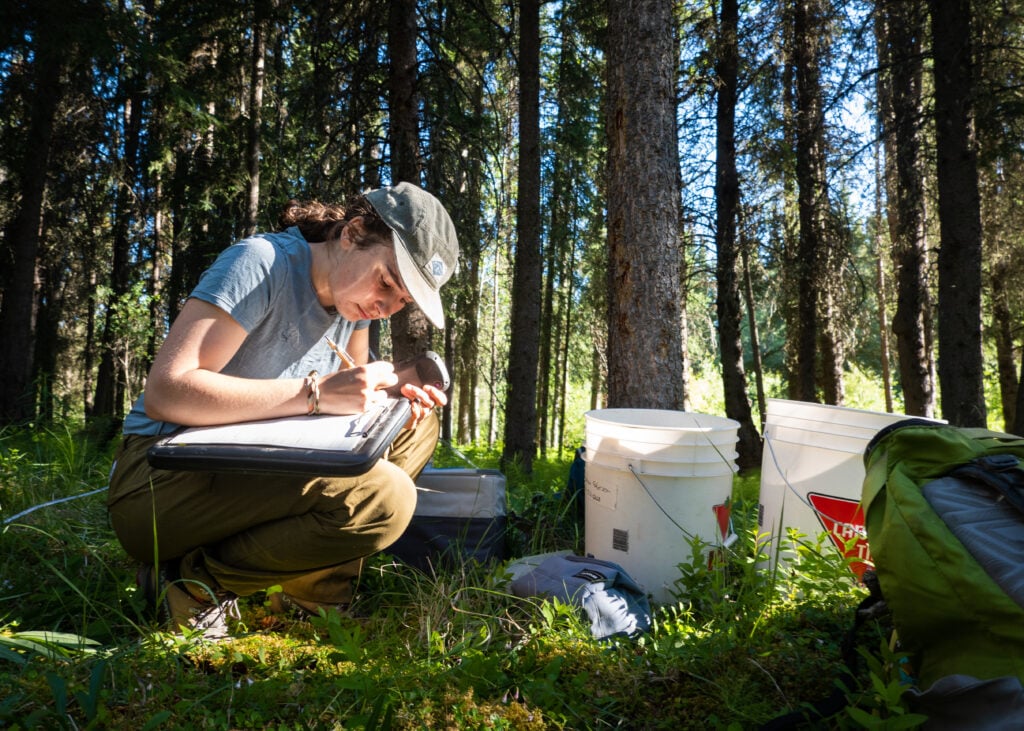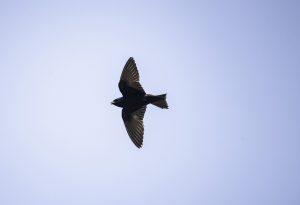In 2021, we designed a study to determine if earthworms are also spreading through lakes and rivers. This is difficult to study in nature, but we found a great place to answer this question. Lac La Ronge is a large lake in northern Saskatchewan with over 1,300 islands. While working in the area, we came to realize that many of these islands have non-native earthworms on them. By understanding the distributions of earthworm populations on these islands in relation to human activity and island geography we can determine how they are spreading. This project is ongoing, but it seems that at least one species of non-native earthworm regularly disperses though water in northern Canada.
To better understand the factors affecting the spread of earthworms in Canada, we are also determining their occurrence at the northern margins of their distribution. Distributional data on earthworms is very limited in Canada and records of earthworms in the Canadian territories are especially few and far between. It is unclear if this is because earthworms are in fact rare at these high latitudes, or because almost no one is looking for them. So, we set out to do the first structured and quantitative survey of earthworms in the Yukon.
The concept is simple, but collecting the data is tough. Each of the last three summers, I’ve spent about three months conducting fieldwork in remote forests, working long days rain or shine, and often living in a tent. I work with a team of research assistants to systematically sample northern forests to see if earthworms are there, and if so, how many, and what species. I then relate these data to factors that might explain why the earthworms are (or are not) there, and will use statistical models to make predictions about their distribution across the landscape.










